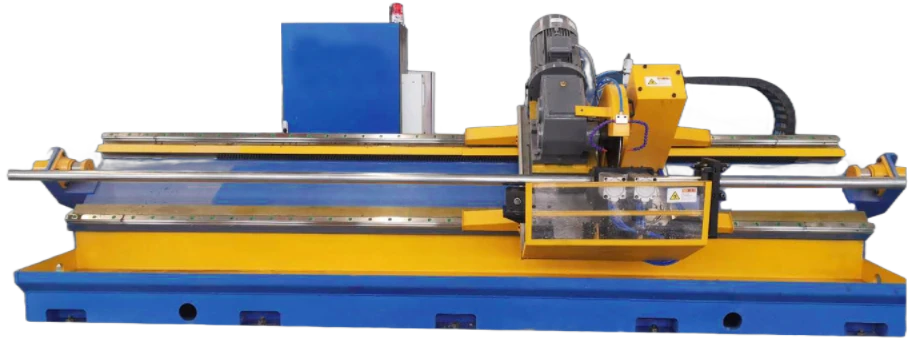cable tray forming machine
Understanding Cable Tray Forming Machines A Comprehensive Overview
In the modern world of electrical installation and infrastructure development, the efficiency and safety of cable management have become paramount. A key element of this process is the cable tray forming machine, a specialized piece of equipment designed to manufacture cable trays that support and organize electrical cables in commercial, industrial, and residential settings.
What is a Cable Tray Forming Machine?
A cable tray forming machine is an automated system that transforms raw materials, typically metal sheets, into cable trays through a series of precise manufacturing processes. These machines utilize advanced technologies, including hydraulic and mechanical systems, to ensure that the trays are produced with high accuracy, consistency, and durability.
The trays produced can come in various shapes, sizes, and configurations including ladder-type trays, perforated trays, and solid-bottom trays. Each type is designed for specific applications, catering to the diverse needs of businesses and industries.
Key Components and Functionality
The operational efficiency of a cable tray forming machine is attributed to its various components, including
1. Feeding System This component handles the raw materials, typically steel or aluminum strips, feeding them into the forming machine with precision.
2. Roll Forming Stations At these stations, metal strips are shaped through a series of rollers. The design of the rollers can be customized to achieve different tray profiles.
3. Cutting Mechanism Once the trays have been formed to the desired shape and length, a cutting mechanism shears them to specified dimensions.
5. Stacking and Packaging After production, the trays are often stacked for easy transportation and storage. Some machines integrate automated stacking systems to streamline this process.
cable tray forming machine

Benefits of Using Cable Tray Forming Machines
1. Efficiency Automated machines significantly increase production speed and reduce labor costs. They can operate continuously, allowing for large volumes of trays to be produced in a short timeframe.
2. Precision Automated forming machines are designed to create cable trays with high accuracy. This precision minimizes waste and ensures that each tray meets the required specifications.
3. Customization With the ability to adjust settings and tools, manufacturers can easily switch between different tray types and dimensions, catering to unique project requirements.
4. Durability The materials used in cable tray production, combined with the precision manufacturing processes, ensure that the trays are robust and can withstand the rigors of their intended environments.
5. Safety and Compliance Properly manufactured cable trays contribute to the overall safety of electrical installations. Forming machines adhere to industry standards and regulations, ensuring that the trays are safe for use in various applications.
Market Demand and Future Trends
With the continuous growth of construction and electrical projects globally, the demand for efficient cable management solutions is rising. As industries increasingly adopt automation and robotics, the evolution of cable tray forming machines is expected to keep pace. Future developments may include enhanced automation features, artificial intelligence for streamlined production processes, and improved energy efficiency.
Moreover, environmental considerations are likely to play a crucial role in future designs, with manufacturers exploring sustainable materials and practices to minimize their ecological footprint.
Conclusion
In conclusion, cable tray forming machines are indispensable in the realm of electrical installations. They not only enhance the efficiency of cable management systems but also contribute to the safety and organization of electrical infrastructures. As technology advances, these machines will continue to evolve, promising even greater innovation and efficiency in the manufacturing of cable trays. Whether you are involved in construction, installation, or manufacturing, understanding the capabilities and benefits of cable tray forming machines is crucial in navigating the complexities of modern electrical applications.
-
High Frequency Straight Seam Welded Pipe Production Line|BzZhou Xinghua|Precision Welding&EfficiencyNewsJul.30,2025
-
High Frequency Straight Seam Welded Pipe Production Line - BzZhou Xinghua|Precision Engineering&EfficiencyNewsJul.30,2025
-
High-Frequency Straight Seam Welded Pipe Production Line-BzZhou Xinghua Machinery Equipment Manufacturing Co., LTD.NewsJul.30,2025
-
High-Frequency Straight Seam Welded Pipe Production Line-BzZhou Xinghua Machinery Equipment Manufacturing Co., LTD.|Precision Manufacturing, High EfficiencyNewsJul.30,2025
-
High Frequency Straight Seam Welded Pipe Production Line-BzZhou Xinghua Machinery Equipment Manufacturing Co., LTD.|Precision Steel Pipe Manufacturing&Industrial EfficiencyNewsJul.29,2025
-
High-Frequency Straight Seam Welded Pipe Production Line-BzZhou Xinghua Machinery Equipment Manufacturing Co., LTD.|Precision Steel Pipe Manufacturing&Industrial EfficiencyNewsJul.29,2025


